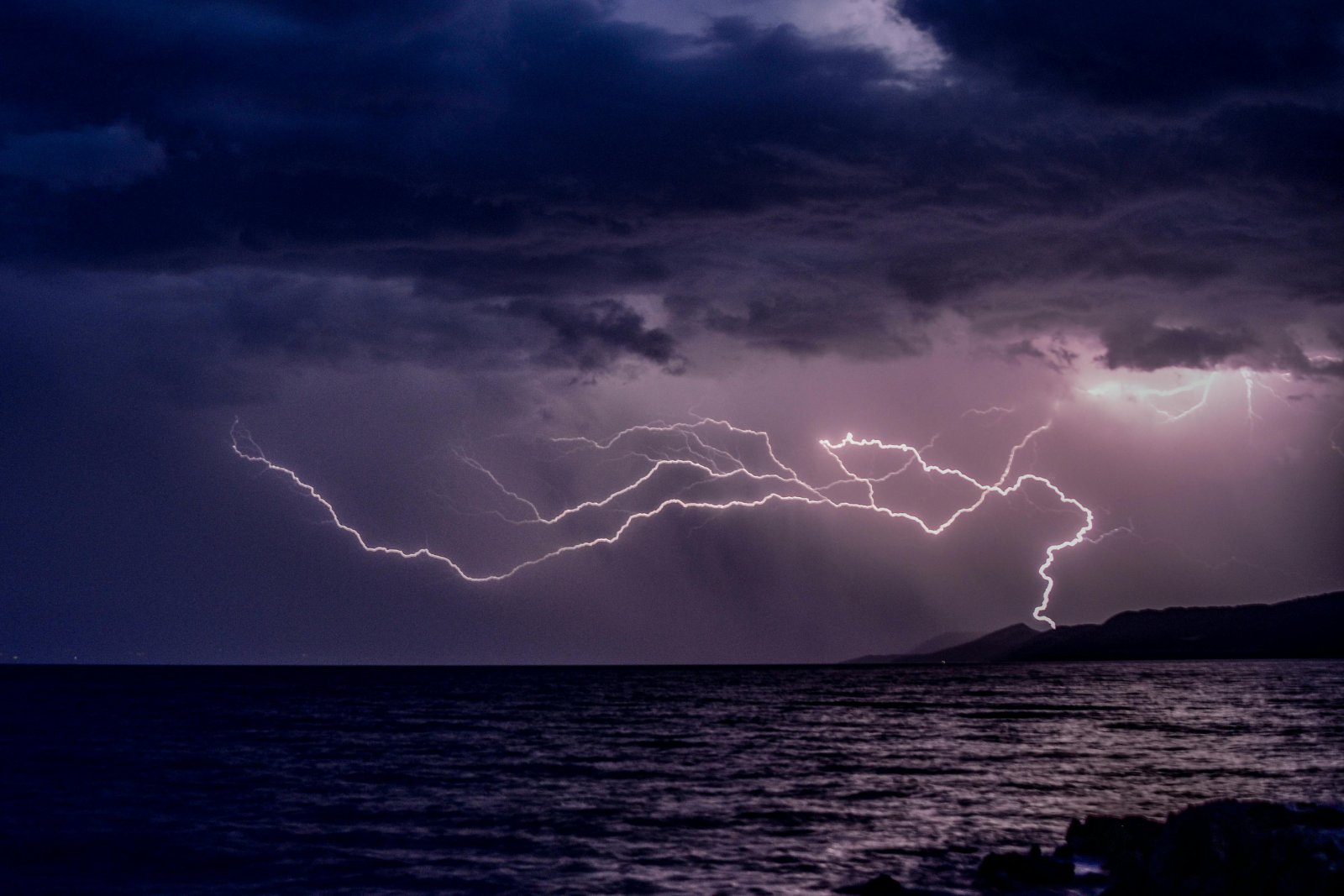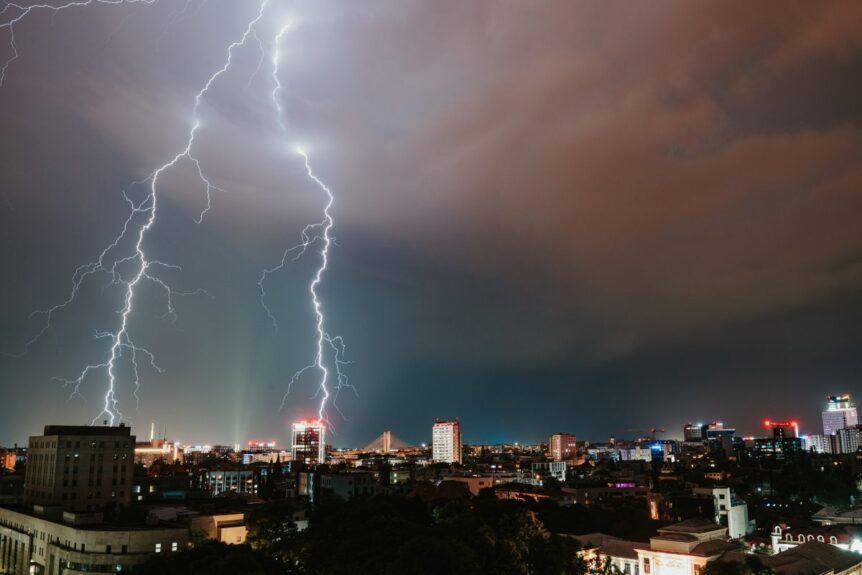Warmer air means more lightning bolts, but if you think that is bringing more rainstorms, you’re wrong.
Danger, High Voltage

Image Credit: Pexels / Shiva Smyth
When climate scientists tell us that global warming is affecting/worsening everything, they don’t just refer to higher temperatures and faster melting snow.
It seems even lightning bolts are aggravated the more our climate is spiraling out of control.
But How?

Image Credit: Pexel / Pixabay
Simple – our atmospheric air becomes warmer with climate change, meaning it can hold more moisture.
Add heat to higher moisture levels and you have the perfect recipe for more lightning storms.
This Isn’t New

Image Credit: Shutterstock / Tom Wang
A study from back in 2014 already predicted that if our climate continues to heat up at its current speed, the lightning strikes hitting the US could double before the next century.
Mathematically speaking, that’s 12% more lightning strikes for every extra 1°C.
More Lightning Isn’t Good

Image Credit: Shutterstock / M. Federico
And more lightning means higher chances of wildfires.
Just think back to 2020 when the typically dry California experienced a surge of about 14,000 lightning strikes within a few days, causing over 600 wildfires that scorched more than 2 million acres while destroying thousands of houses and other structures.
A Growing Global Problem

Image Credit: Pexel / Soumia Photography
But it’s not only in the US, as studies prove lightning bolts are also increasing in India and Brazil, among other places.
According to research from India’s National Crime Record Bureau (NCRB), more than 100,000 people were killed by bolts of lightning between 1967 and 2019.
Who Knew?

Image Credit: Shutterstock / Gorodenkoff
That means that in 52 years, lighting was responsible for about one-third of all deaths attributed to natural hazards in India – more than double those caused by floods.
Alaska, Watch Out

Image Credit: Pexel / Maczkó Gábor
Closer to home, one 2020 study tells us that Alaska has seen an increase of 17% in lightning flashes since the cooler 1980s.
And since the Arctic has been found to be warming up three times faster than the worldwide average, more natural firebolts can be expected in the High North, resulting in more wildfires that will push more carbon dioxide into the air.
More Heat, More Trouble

Image Credit: Shutterstock / Mark-Wu
This will then accelerate the changing of flat mossy tundra into brush and forest landscapes that will capture greater amounts of heat from the sun.
Lightning Location

Image Credit: Shutterstock / Joko P
Earth Scientist with the University of California, Irvine, Yang Chen, authored a 2021 study which was released in the journal Nature Climate Change.
According to him, his findings that lightning strikes are increasing were quite unexpected and concerning, since lightning is the main instigator of wildfires up in the High North of the Arctic.
An Alarming Chain Reaction

Image Credit: Shutterstock / Trevor Bexon
“The size of the lightning response surprised us because expected changes at mid-latitudes are much smaller,” Chen said.
He added that an upsurge in wildfires caused by thunderstorms would worsen the vicious circle of climate change that is already happening in various regions of tundra and permafrost throughout Alaska as well as Siberia.
The US Is Already a Hot Spot

Image Credit: Pexel / RUSLEGIONER.LIVE
But scientists and governments are less worried about lightning hitting people than dry vegetation, which could kickstart wildfires.
In addition to increasing lightning bolts, global warming is also worsening dry conditions in regions like the American West.
Drought Isn’t Helping

Image Credit: Pexel / Vladyslav Dukhin
There, dried grass and trees are figuratively standing by to help ignite and spread more wildfires, since lightning strikes there are already responsible for a sizeable number of runaway fires.
Cruel Nature

Image Credit: Shutterstock / Mark-Wu
In fact, according to US Forest Service statistics, over 40% of the West’s wildfires between 1992 and 2015 were ignited by lightning sparks.
Pity the Golden State

Image Credit: Shutterstock / Serhiy Stakhnyk
In early August this year, Dmitri Kalashnikov, a doctoral student at Washington State University’s School of the Environment, authored a study in which he stated: “Wildfires are a growing threat in California as the climate continues to warm.”
We Don’t Stand a Chance

Image Credit: Shutterstock / Jack Quillin
Kalashnikov further added: “Unlike human-caused fires that originate in a single location, lightning outbreaks can strike multiple locations and start numerous simultaneous wildfires, creating a substantial challenge for fire response.”
Worse in Other States

Image Credit: Pexel / Andre Furtado
Interestingly, California does not even feature among the top 10 US states that experience the most lightning bolts. Texas, Florida, and Oklahoma are the worst thanks to their warm, moist air during summertime.
Still, Keep Clear of California

Image Credit: Shutterstock / PeopleImages.com – Yuri A
But while grass fires can easily occur in those states, the consequences are nowhere near as extensive, destructive, and deadly as when they happen in California.
Could You Get Hit?

Image Credit: Shutterstock / bear_productions
Although the number of lightning bolts is on the rise, experts say that getting struck by one is still quite rare in the US.
According to the Center for Disease Control, the US is hit by approximately 40 million lightning strikes every year.
The chances of being hit by one? Less than 1 in a million.
Fewer Victims

Image Credit: Pexel / Pixabay
But still, about 24,000 people globally die every year due to lightning.
That might be a big number, yet there has been a marked decline over the last 200 years, primarily attributed to urbanization, the availability of more robust housing, and advancements in weather forecasting.
Tables Are Turning

Image Credit: Pexel / Pixabay
Out of the roughly 3,000 victims of lightning strikes in the US every year, only 20 are killed.
However, as researchers and scientists are telling us, those odds could soon be changing thanks to… yes, climate change.
Featured Image Credit: Shutterstock / Cristi Mitu.
The images used are for illustrative purposes only and may not represent the actual people or places mentioned in the article.


